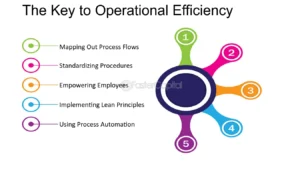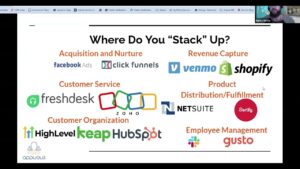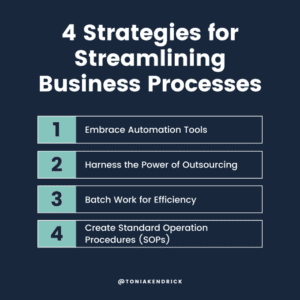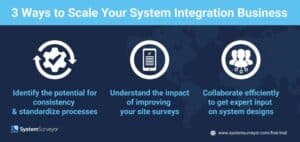Scaling for Success: Growth Tools to Drive Business Expansion
Boost your operational efficiency and long-term profitability by leveraging tools designed for scalability, automation, and system optimization.
Introduction: Why Growth Tools Are Essential for Scaling Your Business
As your business expands, so does the complexity of managing it. Scaling requires more than just increasing your customer base—it involves refining operations, optimizing revenue, and ensuring all systems work together seamlessly. Growth tools provide the infrastructure necessary to handle increased demands while improving efficiency. These tools focus on simplifying your processes, maximizing profitability, and integrating systems that support long-term success.
In this article, we will explore the Growth category and its key subcategories: Business Scaling, Revenue Profit Optimization, and System Integration. By implementing tools in these areas, you’ll be better equipped to grow sustainably and manage the complexity that comes with business expansion.
1. Business Scaling: Build a Sustainable Framework for Growth
Scaling a business is a complex process that involves far more than just increasing production or service output. You need tools that allow you to expand without overwhelming your resources or diminishing the quality of your offerings. This is where business scaling tools come into play, helping you grow strategically and sustainably.
Key Features of Business Scaling Tools:
- Automation Capabilities: These tools automate repetitive tasks, freeing up valuable time for strategic work.
- Scalable Infrastructure: Whether it’s cloud-based platforms or services that expand as your business grows, these tools adapt to your needs.
- Growth Analytics: Use analytics to track key performance indicators (KPIs), ensuring your growth strategies are data-driven and effective.
Pro Tip: Look for tools that offer both scalability and flexibility, such as AWS or HubSpot, which allow you to add services and users as your business grows.
2. Revenue Profit Optimization: Maximize Profitability at Every Stage
Driving growth isn’t just about expanding your reach—it’s also about optimizing your revenue streams. Tools designed for revenue and profit optimization help businesses identify inefficiencies, automate pricing strategies, and ensure that every sale maximizes profit margins.
Why Revenue Profit Optimization is Important:
- Dynamic Pricing: Automatically adjust pricing based on demand, competition, and other market factors, ensuring you remain competitive while maintaining profitability.
- Customer Lifetime Value (CLV): Track and improve customer retention strategies, maximizing the revenue generated from each customer over time.
- Profit Margins Analysis: Use real-time data to analyze where your highest profits come from, allowing you to focus on the most lucrative areas of your business.
Pro Tip: Tools like ProfitWell or Baremetrics provide in-depth revenue metrics, helping you make data-driven decisions that increase profitability.
3. System Integration: Streamline Operations Across All Platforms
As your business scales, it becomes increasingly important to ensure all your systems—CRM, inventory, marketing, and accounting—work together efficiently. System integration tools create a cohesive infrastructure, connecting all your platforms and automating data sharing across departments.
How System Integration Improves Efficiency:
- Centralized Data: Consolidate information from multiple systems into one central hub, ensuring all departments have access to real-time data.
- Automated Workflows: Reduce the need for manual data entry by syncing information automatically across your platforms, reducing errors and saving time.
- API Connectivity: Many integration tools offer API support, allowing for seamless communication between platforms, such as your CRM and email marketing system.
Pro Tip: Zapier and Integromat are excellent tools for automating workflows between your various business apps, ensuring smooth operations as you scale.
Conclusion: Tools to Drive Sustainable Business Growth
Scaling your business requires more than just adding more customers or increasing sales. To grow sustainably, you need to leverage tools that help optimize your operations, increase profitability, and ensure seamless integration across platforms. By investing in Business Scaling, Revenue Profit Optimization, and System Integration tools, you’ll have a solid foundation to manage and accelerate growth efficiently.
Ready to take your business to the next level? Start exploring these tools and set your business up for long-term success.
FAQs
What are the best tools for business scaling?
Some of the best tools for business scaling include cloud-based platforms like AWS and growth-focused CRMs like HubSpot, which offer automation and scalability features to support business expansion.
How can revenue profit optimization tools increase my business profits?
Revenue optimization tools help you identify inefficiencies, automate dynamic pricing, and improve customer retention strategies, maximizing your profit margins over time.
Why is system integration important for growing businesses?
System integration ensures that all your business platforms—CRM, marketing, accounting—are connected and share data seamlessly, improving efficiency and reducing errors as your business scales.
How do I track the success of my growth strategy?
Use growth analytics tools to track KPIs like customer acquisition, retention rates, and revenue growth. These tools help you monitor the effectiveness of your strategies and make data-driven adjustments.
What are some tools for system integration?
Popular system integration tools include Zapier and Integromat, which help automate workflows and sync data across multiple business platforms, ensuring a smooth and cohesive operation.
Keywords: Business Scaling, Revenue Profit Optimization, System Integration, growth tools, scalable infrastructure, business automation, profit margins, API integration.










